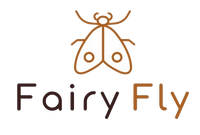Using Beneficial Insects Correctly - The Ultimate Beginner's Guide
Author: FairyFly | Reading time: 6 minutes
You've decided on biological pest control—a smart choice for your health and the environment! But how do you use beneficial insects correctly? What conditions do they require? And what are the most common mistakes? This comprehensive guide will teach you everything you need to know for the successful use of beneficial insects.
Basics: How biological pest control works
The principle is simple: Beneficial organisms are natural enemies of pests. They feed, parasitize, or compete with unwanted insects and mites. Unlike chemical agents, they act specifically and do not develop resistance.
The most important beneficial insect types:
- Predators (ladybugs, predatory mites) actively eat pests
- Parasites (parasitic wasps) lay eggs in pests
- Parasitic nematodes attack pest larvae in the soil
- Specialized storage wasps combat stored product pests
- Storage pirates hunt various pests in storage rooms
-
Step-by-step: Using beneficial insects correctly
Step 1: Choose the right beneficial insect
Each beneficial organism is specialized:
- Aphids → ladybugs, lacewings, parasitic wasps
- Spider mites → predatory mites (Amblyseius californicus)
- Thrips → predatory mites (Neoseiulus cucumeris)
- Fungus gnats → SF nematodes
- Food moths → Trichogramma parasitic wasps
- Clothes moths → Trichogramma parasitic wasps
- Stored product pests → Storage wasps (Lariophagus distinguendus, Anisopteromalus calandrae)
- Various storage room pests → Storage pirates (Xylocoris flavipes)
Important: Using the wrong beneficial insects won't work! First, identify the exact pest.
Step 2: Create optimal conditions
Temperature:
- Ideal: 18-25°C for most beneficial insects
- Predatory mites: 20-25°C optimal
- Nematodes: 12-25°C possible
- Ichneumon wasps: 18-30°C
- Storage wasps: 20-28°C optimal
- Storage pirates: 18-30°C
Humidity:
- Predatory mites: 60-80% for best effect
- Ichneumon wasps: 50-80%
- Woodworm wasps: 50-70%
- Camp pirates: 40-70%
- Dry heating air significantly reduces effectiveness
Lighting:
- Normal room conditions are sufficient
- Avoid direct sunlight when applying
- Greenhouse: Shading at temperatures above 30°C
Step 3: Correct application for each beneficial insect type
Apply predatory mites as sachets:
- Open the bag carefully - do not shake!
- Spread the litter evenly on the affected plants
- Pay particular attention to the undersides of the leaves
- Do not wash - predatory mites need time to spread
- Can also be hung in the plant as a bag
Use parasitic wasp-Trichogramma cards:
- Remove cards from packaging
- Hang or place near the infestation site
- New cards every 1-2 weeks (depending on treatment plan)
- Do not expose to direct sunlight
- The optimal solution: Replace the cards every three weeks! Three times for food moths and four times for clothes moths. This way, you break the entire moth life cycle and are moth-free!
Use larvae wasps:
- Carefully open the shipping tube
- Distribute contents evenly in affected areas
- Especially in corners and cracks of storage cupboards
- Do not vacuum for 4-6 weeks after application
- Wasps actively search for pest larvae
Deploy camp pirates:
- Place tubes in affected areas
- Camp pirates crawl out on their own
- Hide during the day, hunt at night
- Ideal for storage rooms, pantries and kitchens
- Very effective against various stored product pests
Applying nematodes:
- Dissolve powder in lukewarm water (not above 25°C!)
- Use immediately after mixing
- Pour or spray evenly over soil
- Keep the soil moist afterwards (not wet!)
Avoid the 7 most common mistakes
❌ Mistake 1: Reacting too late
- The problem: In case of severe pest infestation, beneficial insects need longer
- The solution: Regular plant inspection, early action
❌ Error 2: Are still stored
- The problem: Beneficial organisms die before application
- The solution: Use beneficial insects immediately after arrival and do not store them
❌ Mistake 3: Using chemical agents in parallel
- The problem: Pesticides also kill beneficial insects
- The solution: Avoid using chemicals for 2-4 weeks before and after using beneficial insects. Ideally, avoid them completely.
❌ Mistake 4: Impatience
- The problem: Expectation of immediate effect like with chemicals
- The solution: Plan 1-3 weeks for visible results
❌ Mistake 5: Air that is too dry
- The problem: Beneficial insects dry out, especially in winter
- The solution: Use humidifiers, spray plants, hang up wet towels
❌ Mistake 6: Overdose
- The problem: More doesn’t always help more
- The solution: Follow the recommended amounts, repeat if necessary
❌ Mistake 7: Pests incorrectly identified
- The problem: Beneficial organism does not work against other pests
- The solution: Identify the pest precisely, ask if unsure
Measuring success: How do you recognize the impact?
First signs (after 3-7 days):
- Predatory mites: Small, fast-moving dots on plants
- Ichneumon wasps: Black "mummies" on aphids
- Nematodes: Fewer fungus gnats
- Woodworm wasps: Activity visible in infested areas
- Storage pirates: Fewer living pests in traps
Significant results (after 1-3 weeks):
- Decrease in pest numbers
- Less new damage to leaves/stocks
- Better plant health
- No more sticky honeydew residue
- Reduced moth flight and fewer larvae
Long-term effect (after 4-8 weeks):
- Pest population under control
- Healthy, strong plants
- Natural balance established
- Moth-free kitchen and pantry
Professional tips for maximum success
1. Combination treatment for severe infestation
In case of massive pest infestation, you can combine various beneficial organisms:
- Different predatory mite species against several pests
- Storage wasps and storage pirates against various storage pests
- Parasitic wasps and predatory mites in mixed infestation
2. Preventive use
- In the greenhouse: Release beneficial insects preventively before pests appear
- For houseplants: After repotting or new plants
- In storage rooms: Use storage wasps and storage pirates preventively
3. Optimal timing
- Best time of year: Spring to autumn (March-October)
- Time of day: Apply in the morning or evening, not in direct sunlight
- Stored product pests: Possible all year round, especially effective in autumn/winter
4. Quarantine for new plants
Place new plants separately for 2-3 weeks and check for pests.
5. Accompanying measures
- Set up yellow boards to control flying pests
- Shower plants before using beneficial insects (reduces pest pressure)
- For storage pests: Dispose of infested food, clean cupboards thoroughly
- Optimal care - healthy plants are less susceptible
Frequently asked questions about the application
Are beneficial insects dangerous to humans or pets? No, all of the beneficial insects available from us are completely harmless. They are only interested in their prey.
What happens to the beneficial insects after their work is done? When there are no more pests, the beneficial insects disappear on their own or die naturally.
Can I use beneficial insects on edible plants? Yes, without any concerns! There's no waiting period like with chemical pesticides.
How often do I need to repeat the treatment? Depending on the pest and the severity of the infestation, 1-4 applications at intervals of 2-3 weeks.
Do storage wasps also work in the kitchen? Yes, they are specifically designed for use in kitchens and pantries and are completely harmless.
Checklist for the perfect use of beneficial insects
Before use:
☑️ Pest correctly identified
☑️ Suitable beneficial organism selected
☑️ Optimal conditions created (temperature, humidity)
☑️ No pesticides used in the last 2 weeksWhen using:
☑️ Instructions followed exactly
☑️ Evenly distributed
☑️ Not exposed to direct sunlight
☑️ Correct amount usedAfter application:
☑️ Maintain optimal conditions
☑️ Do not use pesticides
☑️ Be patient (1-3 weeks)
☑️ Observe and document successConclusion: With the right application to success
Biological pest control is highly effective – when used correctly. The most important success factors are choosing the right beneficial organism, creating optimal conditions, and patience. With storage wasps and storage thrips, you also have highly effective specialists for stored product pests at your side!
Do you have questions about the application or are unsure which beneficial organism is suitable for your problem? We're happy to advise you and help you find the optimal solution!




